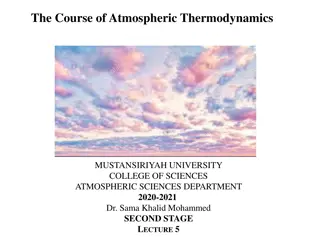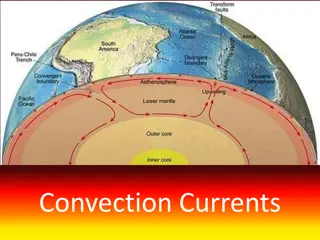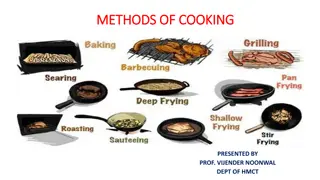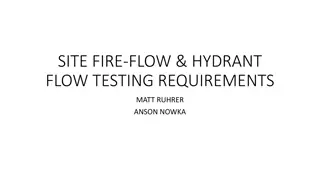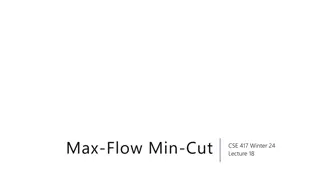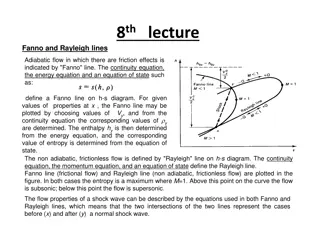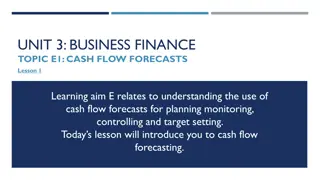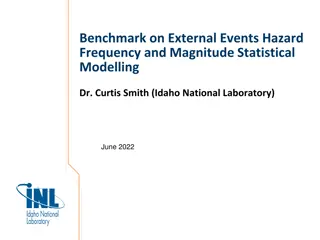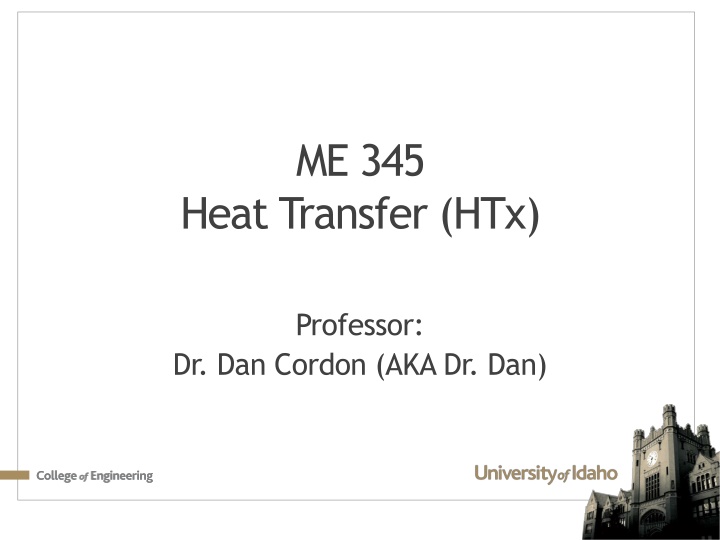
Convection: Understanding Heat Transfer over Different 2D Shapes
Explore the convection phenomena over various 2D shapes in cross flow, such as an infinitely long cylinder, and learn how momentum affects flow transition from laminar to turbulent. Discover the significance of Reynolds Number, drag coefficient calculations, and the average Nusselt Number equation for cylinders in cross flow. Gain insights into evaluating properties and an improved equation for circular cross sections.
Download Presentation

Please find below an Image/Link to download the presentation.
The content on the website is provided AS IS for your information and personal use only. It may not be sold, licensed, or shared on other websites without obtaining consent from the author. If you encounter any issues during the download, it is possible that the publisher has removed the file from their server.
You are allowed to download the files provided on this website for personal or commercial use, subject to the condition that they are used lawfully. All files are the property of their respective owners.
The content on the website is provided AS IS for your information and personal use only. It may not be sold, licensed, or shared on other websites without obtaining consent from the author.
E N D
Presentation Transcript
ME 345 Heat Transfer (HTx) Professor: Dr. Dan Cordon (AKA Dr. Dan)
CONVECTION 2D SHAPES IN CROSS FLOW So far, we have considered just parallel flow over a flat plate, which is a great foundation for modeling convection. However, we often have other shapes that are in an external flow. Let s start with looking at convection over an infinitely long cylinder where flow is perpendicular to the cylinder. In this case, some of the flow will be laminar, but at some point around the cylinder the flow is likely to separate and become turbulent.
CONVECTION 2D SHAPES IN CROSS FLOW On the leading side of the cylinder, momentum of the flow helps keep flow laminar. However, on the trailing side of the cylinder momentum quickly leads to eddy formation, which transitions the flow to turbulence. Now we use Reynolds Number based on Diameter
CONVECTION 2D SHAPES IN CROSS FLOW For ReD < 2 x 105 separation will occur around 80 For ReD > 2 x 105 separation will occur around 140
CONVECTION SHAPES IN EXTERNAL FLOW Drag coefficient can be calculated CD has huge drop after ReD > 2 x 105
AVERAGE CONVECTION CROSS FLOW The equation for the average Nusselt Number for a cylinder in cross flow is: Where values of C, m, and n are usually independent of the fluid so long as the Prandtl Number is greater than 0.7. For a cylinder in cross flow the values of C and m depend on the Reynolds Number.
AVERAGE CONVECTION CROSS FLOW Non-circular shapes for equation at left Evaluate Properties at Tinfinity
AVERAGE CONVECTION CROSS FLOW An improved equation for circular cross sections is: for Values for C and m will be shown on the next slide. For the above equation *most* of the at Tinfinity. The exception is that Prs is the Prandtl Number at the surface temperature. Additionally, the value of n to use is based on the Prandtl Number For Pr < 10, use n = 0.37 For Pr > 10, use n = 0.36
AVERAGE CONVECTION CROSS FLOW Evaluate Properties at Tinfinity (except for Prs)
AVERAGE CONVECTION CROSS FLOW Do you prefer equations to tables? If so, there is a big equation that works over a range of Reynolds Numbers. This equation may be used for any ReD, and so long as Pr > 0.2 For this equation *all* properties are to be found at the Film Temperature.
EXAMPLE 7.4 Find: Convection coefficient from the experimental data Compare with prediction from equations
EXAMPLE 7.4 Looking up properties at Tinfinity
EXAMPLE 7.4 Alternate Correlations
EXAMPLE 7.4 Alternate Correlations
AVERAGE CONVECTION SHPERE The equation for the average Nusselt Number for a sphere is: All properties are evaluated at Tinfinity except for the viscosity at the surface (mus)
FE Handbook The FE Handbook is a great (condensed) resource for any engineering calculations. Let s look at this resource and compare it to what you ve already seen in this course


